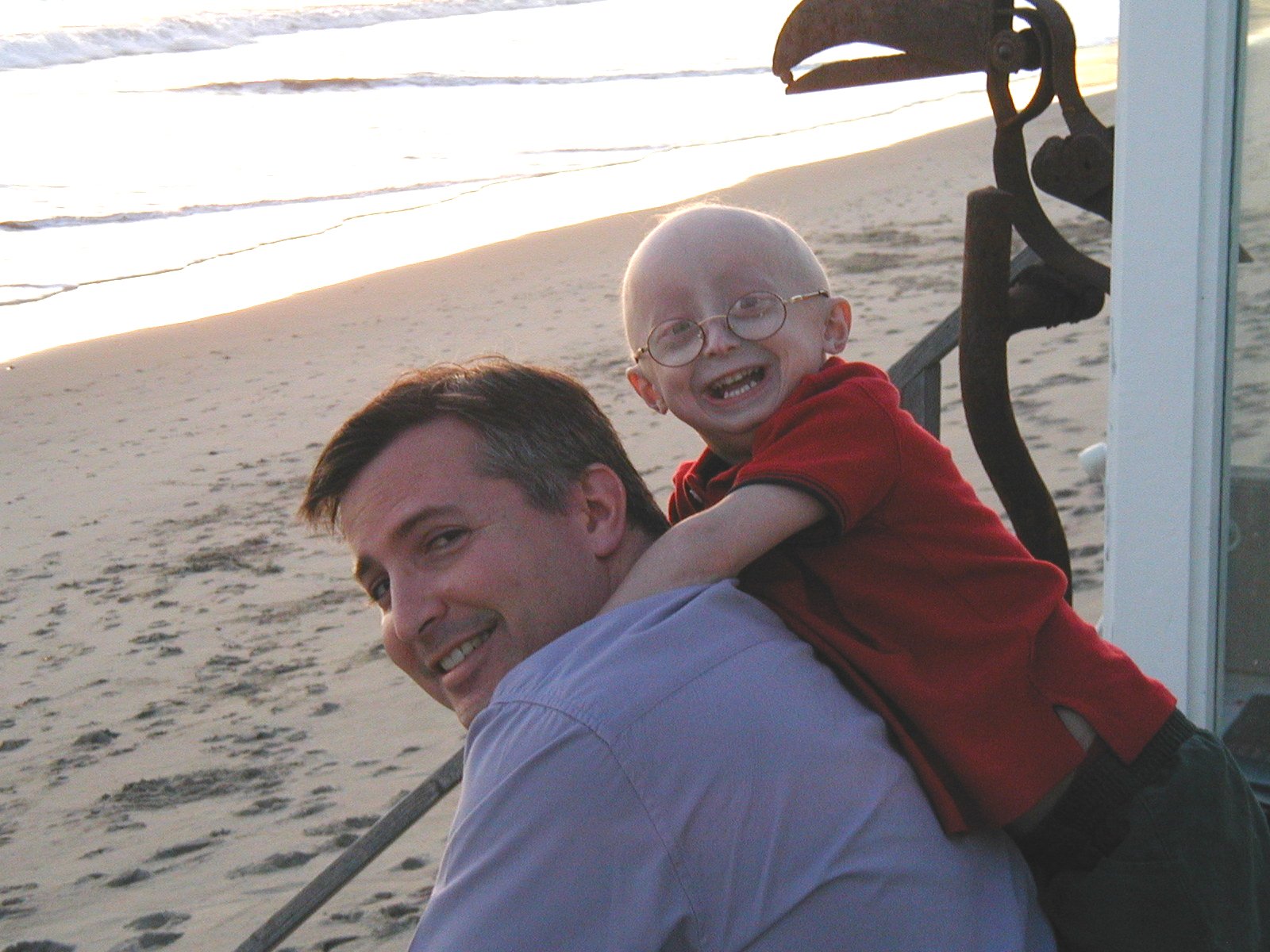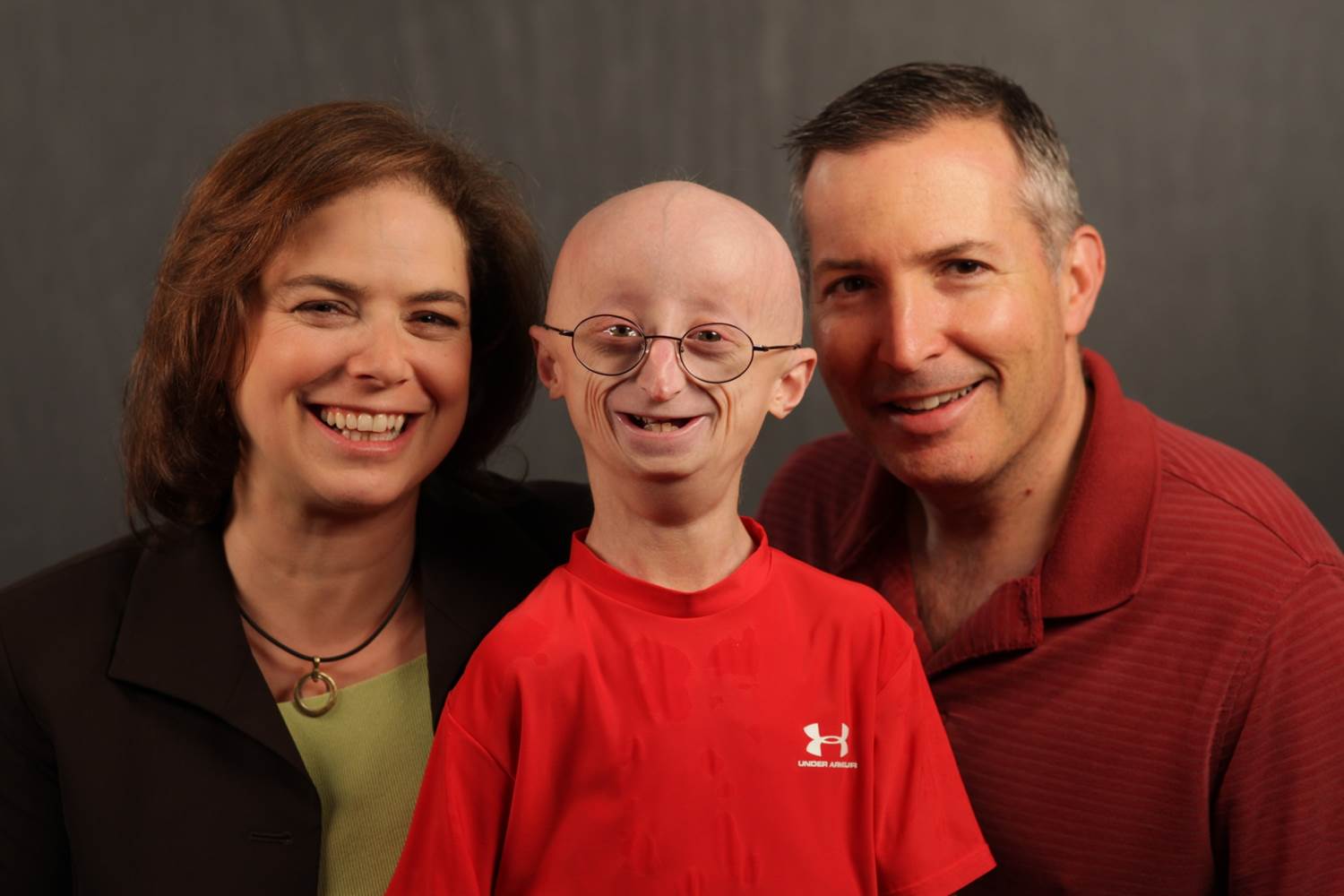Rare Diseases Deserve Our Attention
Between 25 and 30 million Americans, many of them children, are living with a rare disease. The complex challenges facing these children and families deserve attention and demand innovative responses.
NICHQ President and CEO Scott D. Berns, MD, MPH, FAAP, understands this need, perhaps better than anyone. His connection to the rare disease community is both professional and personal: as a pediatrician trained to diagnose and treat childhood illnesses; as the leader of a national children’s health organization driving change in systems of care; and as a father who lost his only child to progeria, one of the rarest diseases in the world.
“I think sometimes hearing the words ‘rare disease’ belies a sense of urgency, when urgency is exactly what’s needed,” says Berns. “While each disease is rare, together they affect nearly one in 10 people. And these individuals and their families deserve urgent interest from all of us working to improve health outcomes.”
Berns brings his uniquely multifaceted perspective to NICHQ’s portfolio of children’s health initiatives and to his work on the Advisory Panel on Rare Disease for the Patient-Centered Outcomes Research Institute (PCORI). In an effort to spread his insights to an audience of change agents, we asked Berns to share his experience, elaborate on successful strategies, and describe his goals for the future.

NICHQ: Your family’s story illustrates the impact rare diseases have on millions of Americans. What is the main thing you want health improvement stakeholders to take away from your experience?
Berns: In short: Listen to families and engage them as advocates.
Sam, our first and only child, was born with progeria, a rare genetic condition that causes rapid aging. His story, my family’s story, means that I understand the challenges and needs a family has when going through this. Even though I am a pediatrician and I had treated children with rare diseases, I didn’t fully understand what families went through. You cannot completely understand this experience unless you live through it, and that’s why we need to listen to families.
My wife and I were parents who also happened to be physicians—and even though we felt that something was wrong, people didn’t quite hear us. They told us that we just knew too much and were being overly anxious. Sam lost his hair and stopped growing, and we were getting misdiagnoses like acid reflux. It was incredibly frustrating and upsetting.
When we finally did get a diagnosis, we learned Sam had a condition that affects one in four million births worldwide. That’s just one birth a year in the U.S. Then, faced with what we were going to do, we lived the frustration of seeking answers and treatment options. We learned how to be an advocate for Sam and an advocate for children with progeria around the world. And, again and again, we saw how important it is to listen to families—always, but especially regarding rare diseases.
Whatever a person’s perspective—clinician, researcher, public health professional, policy maker—we need to recognize that improvement is not possible without involving families. Their voices and knowledge are irreplaceable for understanding the effects of a disease. I’ve seen this in my personal life and in my work with NICHQ, and I feel fortunate to be part of an organization that puts family partnership at the heart of our improvement efforts.
What are the biggest successes you’ve seen regarding rare diseases?
In short: the smallest things matter as much as the biggest.
I think we should think about successes on both a broad scale, think policy achievements and research breakthroughs, and on an individual level where we look at what we’ve accomplished for each family. By looking at both, we can spread and scale successes from all angles and have a greater impact.
On a broad scale, passing the orphan drug act (ODA) was a victory for rare diseases, and continuing to support that legislation is vital for the health of children and families. The ODA incentivizes pharmaceutical companies to develop drugs for rare diseases—drugs that, from a cost-perspective, might otherwise not have been worth investing in. Because of the ODA, the U.S. Food and Drug Administration has approved hundreds of drugs, and there are hundreds more in the pipeline. Given that over 90 percent of rare diseases still don’t have a treatment, anything that helps convince pharmaceutical companies to prioritize families in need is worth doing.
Another significant success has been the impact of rare disease research on common health conditions. For example, Goldstein and Brown’s research on familial hypercholesterolemia evolved into the statin treatment, which helps people across the country who suffer from high cholesterol. My wife and I founded the Progeria Research Foundation, and its work on progeria and heart disease, the number one killer of all Americans, has similar potential. Rare disease research doesn’t live in a vacuum and acknowledging that can help motivate stakeholders, foster collaboration and accelerate improvements.

These successes have enormous potential for rare disease treatment and cures, but continued improvement takes time. That’s why it’s also important to think about how to support successes for individual families. At NICHQ, our mission is to help every child achieve his or her optimal health. The word “optimal” is key because it acknowledges that “optimal health” is going to mean something different for every child, and that’s especially true for children born with rare diseases. I think about this a lot when I think about Sam. When he was in high school, he wanted to be in the marching band, but he was told his health made that impossible. He didn’t accept that answer though, and neither did we. Instead, we designed a drum that he could carry safely, and he marched with the band. This instance, this success, reaffirms the importance of helping parents be the best advocates they can be for their children. We were able to provide Sam with what he needed to pursue his optimal health—to engage in an activity that supported his health and happiness.
As health professionals seeking improvement, we should remember that improving outcomes means helping all parents support their child’s optimal health. It’s incumbent upon us to provide families with safe spaces where their voices are heard, and then offer the support and encouragement they need to be the best advocate they can be for their child.
What more can organizations and stakeholders do to support children born with rare diseases?
In short: focus on diagnosis, treatment and access.
Each rare disease is incredibly complex and has a multitude of unique challenges. But, as a nation, we can prioritize three buckets for improvement: diagnosis, treatment and access.
Many genetic conditions go undiagnosed or misdiagnosed, and this is frustrating for families and harmful for their children’s health. For those genetic conditions that are diagnosable, newborn screening has been an incredibly successful public health program because it helps identify babies born with rare diseases and get them into treatment early, ultimately changing and saving countless lives. As an organization, NICHQ has a history working to improve the effectiveness of newborn screening because we know diagnosis, when available, is the first step to helping children with rare diseases reach their optimal health.
Once a child is diagnosed, the question then becomes what can be done and what medicine or treatments exist. This is where research organizations like the National Institutes of Health (NIH) and National Organization for Rare Disorders (NORD) play a big role, as well as research by major pharmaceutical companies: together they uncover breakthrough drug therapies that change the rare disease landscape. Yet, access to known treatments often relies on access to knowledgeable providers. Consider sickle cell disease (SCD) and hydroxyurea, a drug that can effectively reduce the excruciating pain episodes SCD patients endure. Because many providers have inadequate knowledge about the drug, far too many children and young adults never receive the treatment they need. This paucity of knowledgeable providers has an even bigger impact on children and families living in rural areas who may have to travel hundreds of miles to receive care.
Telementoring programs like Project ECHO®, where virtual learning helps specialists train community providers, have so much potential for transforming rare disease care and addressing issues of access. We see this in the federal Sickle Cell Disease Treatment Demonstration Regional Collaborative Program (SCDTDRCP). We’re partnering with five regional teams who are leveraging Project ECHO to increase knowledgeable providers and spread expert SCD care to individuals across the country.
What is your biggest hope for rare disease improvement in the future?
In short: Unite!
We’ve made a lot of progress: we’ve passed effective policies; organizations like NIH, NORD and PCORI are spearheading research and delivering support to families; improvement initiatives both big and small are optimizing outcomes; and advocacy organizations are raising awareness across the country. Each of these efforts has significant impact alone, but we could multiply that impact if we found a way to work more effectively together.
Doing this will require a roadmap of sorts—a national strategy that brings together the moving pieces and players that define the rare disease landscape. By delineating the role of each stakeholder and showing the connections between each, we can remove silos and inspire national improvement. As an improvement organization and national change agent, we’re invested in uncovering how we can best support this national momentum.
Learn more about NICHQ’s efforts to improve outcomes for children born with rare disease through the SCDTDRCP and through the Newborn Screening Clearinghouse.
